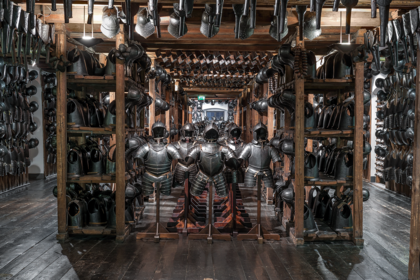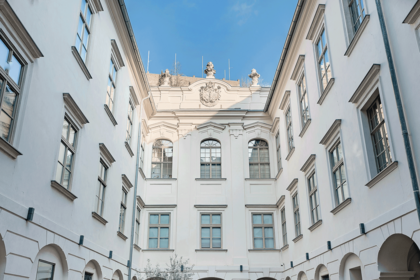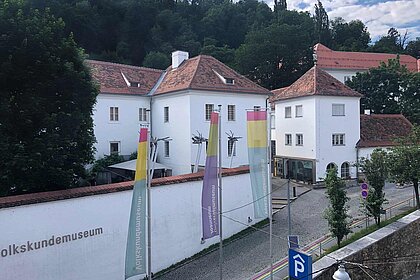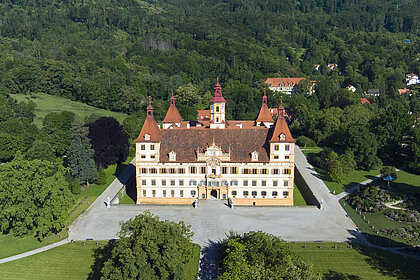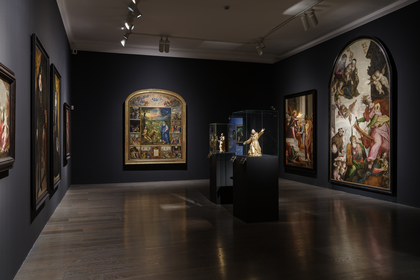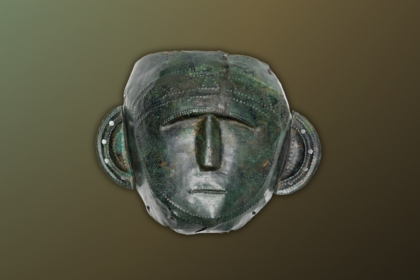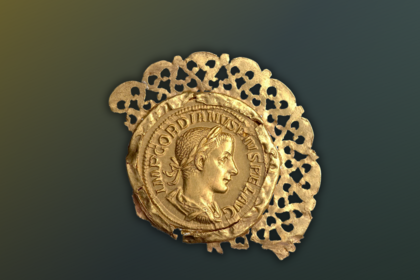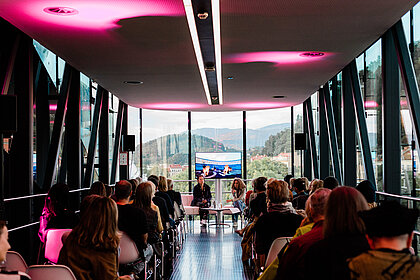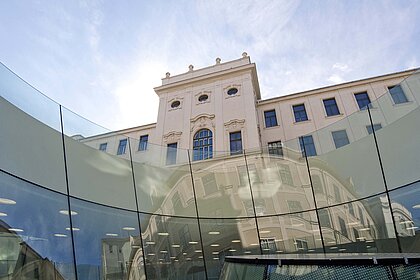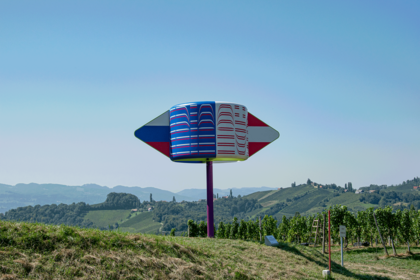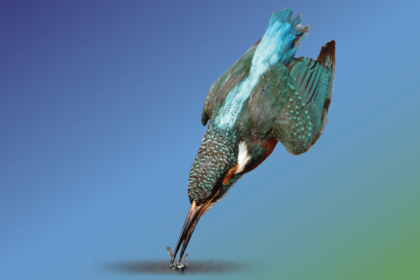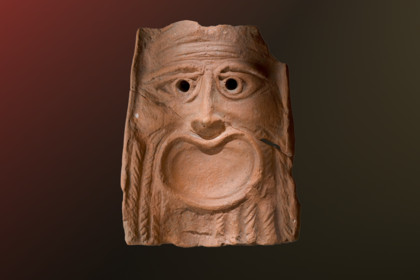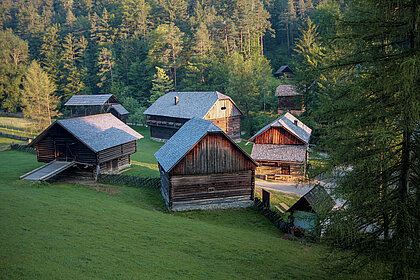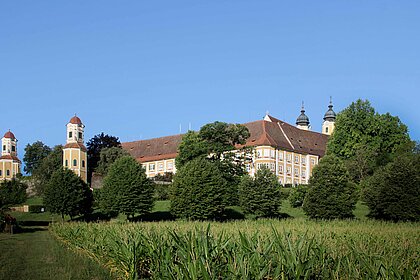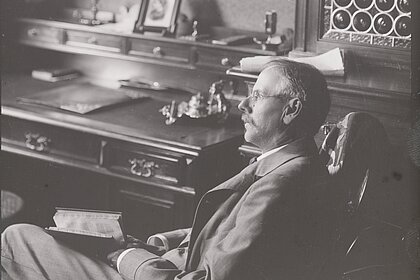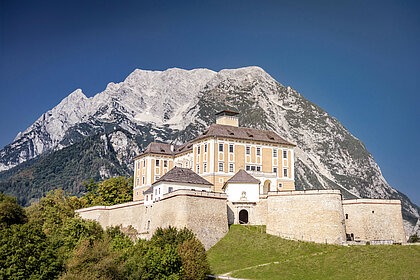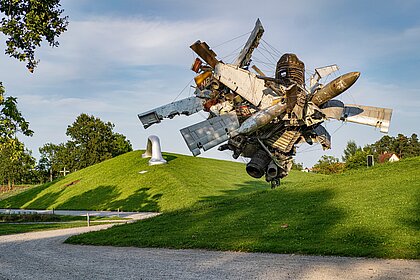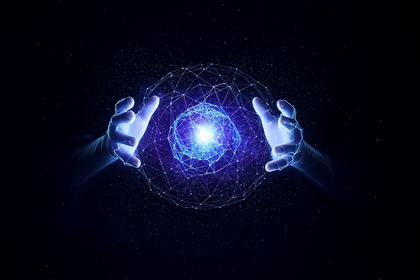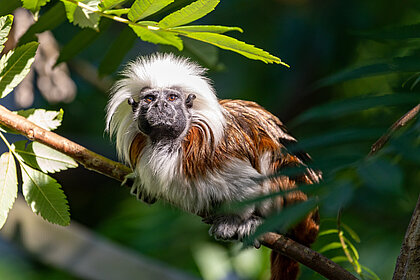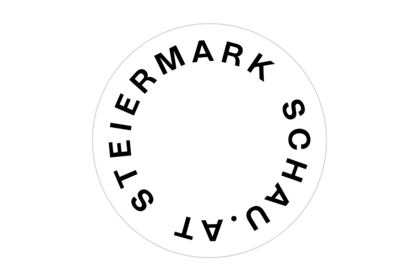Town and country . Far away, abroad, homeland . Genre, portrait, nude . Dissolution
Selection. Highlights of the Collection
Show all
The Neue Galerie Graz collects art from 1800 through to the present day, and from the very beginning has included a lot of paintings, which are also a primary focus of this exhibition. For reasons of space and conservation, this selection of works is limited to just a small part of the whole collection. The presentation centres on subjects that have a strong presence in the collection.
The themes of landscape, genre, portrait and body have engaged artists for more than 200 years. The dialogue between positions from different periods invites us to draw comparisons between both their content and form. New perspectives are created that call on us to look, recognise and see. Juxtaposition has the effect of mutually intensifying the pictorial worlds, so opening up new perspectives on the collection. The canon of art history – long regarded as fixed – has broken open, the grand narrative has been cracked by its gaps. Painting has been declared dead many times and the end of the picture debated.
In 2024, however, many of the responses from the public have made it clear that the process of painting, the effects of colour and paint, and the capture and dissolution of the representational in the picture continue to fascinate us to this day.
Town and country
Idealised, composed or springing from the imagination, around 1800 the objective was to promote the idea of people living in harmony with nature. During the Biedermeier period in the mid-19th century, the landscape became a place of yearning in the urban middle-class parlour. Climbed and conquered, the Alps and became a tourist highlight. The mill was chosen as a special motif, not just for its romantic qualities, but also to stand for economic prosperity as a symbol of technical progress.
As industrialisation surged, the human occupation of the landscape also picked up speed and today has reached a turning point. Wars destroy landscapes and fuel climate change. Resources are finite, soils are limited. Extremes of weather and the forces of nature were already featured in the 19th century as weather effects charged with atmosphere, sometimes providing a moralising climax. The landscape also defines home and belonging, acting as a symbol of cultural identity, history and national memory. The Erzberg in Styria is one such iconic place. As an engine of economic growth, during its time of use it has also always possessed a political significance. Cityscapes, by contrast, are testimony to the growth of urbanisation. Idyllic ensembles, subjective moods and sections portray big cities, but the small market town is also a theme.
Following the Second World War, there was a shift away from realistic landscape painting towards the abstract colour movement. Nature became internalised, manifesting emotional, mental or spiritual retreats in light, colour and the non-figurative. In the historical context of wars and uprisings, the city becomes a projection surface for resistance or a backdrop of devastation and ruin.
Far away, abroad, homeland
In the 19th century, artists began to travel further afield. After studying the antiquities in Rome, they continued across the Mediterranean, to North Africa or the Orient. Enthralled by the light, the land and its people, they often did not transfer their many impressions to the canvas until they had returned to the studio back home. The appeal lay in the unfamiliar, the exotic, and in particular the people, whose skin colour was different. Thanks to the special lighting conditions there, Austrian artists found the ‘exotic’ relatively nearby in Szolnok (Hungary) and around 1850 founded an easily reachable artists’ colony.
Distant, foreign cultures could also be admired at the 1873 World Exhibition in Vienna. Crown Prince Rudolf’s travels to the Orient after 1881 further popularised the ‘illusion machine’ of the Orient. While Europe experienced soaring prosperity due to colonisation, industrialisation, economic growth and the market economy, the conquered and exploited territories also became a source of fascination to be studied. The migration of the exploited and the displaced, sometimes from war zones, gives rise to genre scenes in deserted, cold landscapes. In contemporary transcontinental dimensions of travel, migration and experiencing the world, a new facet is added to the view from the outside of one’s ‘own’. What is interesting for ‘others’ about ‘our culture’? What actually remains of our ‘own’ at a distance?
Genre, portrait, nude
Social issues are examined in foreign cultures, but also within our own social fabric. Scenes of everyday life are known as ‘genre paintings’ in art. Dancing and revelry at the inn are just as much a part of this as domestic scenes. During the Biedermeier period these scenes were presented as particularly idyllic. Depictions of poverty aim to raise moral questions of sharing and giving in a Christian farmhouse in order to evoke empathy and compassion among the urban bourgeoisie. The supposed happiness of the farmer’s family portrayed also seeks to reinforce the family as a place of cohesion, characterised by the mother’s joy, which seems to be the greatest happiness in the world. It is no longer the holy Mother of God who is idolised as a pictorial motif, but the simple woman from the countryside, whose only task in life seems to be working hard for the well-being of her brood of children.
In contrast to this we find portraits of women immortalised as elegant ladies, fashion-conscious and stylish. Artistic self-portraits, which are based on a process of self-examination, also tell us a lot about the position of the artist. At the Academy of Fine Arts, studies of nudes were a compulsory course during training. The goal was to carefully examine proportions and movement sequences. Although women often posed as nude models, for moral reasons they were not permitted to take part in drawing nudes until 1920. In the few examples preserved in the collection, they studied their own bodies in the mirror. The male gaze on the naked female body was usually very different at this time. Subsequently depictions became more abstract as bodily sensations or data bundles.
Dissolution
Over time, the transformation of the body in the image was accompanied by an expansion of the panel painting. The medium of painting was reinvented. The material, texture and appearance of the paint became central. The white exhibition space became a surface where the form and content of the image can be interrogated. Lines and gestures, the representation of the brushwork, the sculptural paint, the possibilities of painting as a play on the properties of the material now dominated. There was a blurring of the boundaries between painting, sculpture, installation and media art. Art was increasingly discussed in terms of issues around its form, and so became a field of experimentation.
The properties of a wide range of materials were explored, they were shaped into sculptures or even made to appear immaterial. Optical effects, sometimes irritating, create the impression of movement and encourage the viewer to look at the work from different angles. We are invited to keep moving around, to participate, and perhaps even become a sculpture ourselves.
